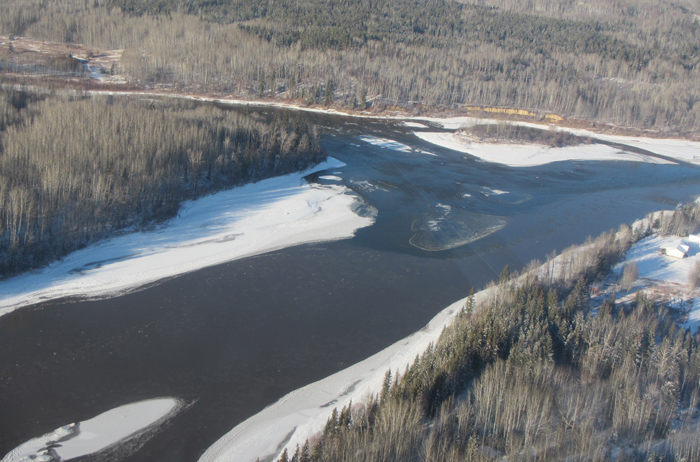Announcements
Top 10 2014 Stories: 8) Northern Alberta: Not Just the Oil Sands
Coal slurry spills into the Athabasca River in Alberta
Credit: Alberta Environment and Sustainable Resource Development
Alberta's boreal region will remain a region to watch in 2014 after a tough 2013, which included pipeline leaks, bitumen pouring to the surface near Cold Lake, the continued health and rights concerns of Aboriginal peoples throughout the region, and more. And it is not just the oil sands. The leaking of one billion litres of toxic coal slurry into the Athabasca River was a big story in November and December of 2013. The toxic flow eventually made its way toward the border of the Northwest Territories and served as a visible and ugly reminder of how pollution does not respect geographical boundaries.
A December report by Global Forest Watch showed that all of the woodland caribou herd ranges in Alberta suffered substantial declines of intact forest habitat over the period 2001 to 2010. In fact, the analysis showed that there were no remaining intact forest landscapes in the Little Smoky woodland caribou herd range. While government and industry continue to talk about the need to properly monitor the region and find ways to pursue cleaner development, the situation on the ground in Alberta's northern boreal shows no sign of improvement. Concerns were heightened by news reports in late 2013 indicating many oil sands projects will not be included in the new federal Environmental Assessment process, as well as the federal decision to approve the Jackpine oil sands mine despite significant evidence of adverse impacts.
Legal battles appear likely as Aboriginal communities draw lines in the sand over the pace and scale of oil sands development. Alberta's boreal region will likely remain a hotbed of news to watch for in 2014.
Resources
View Slideshow »


